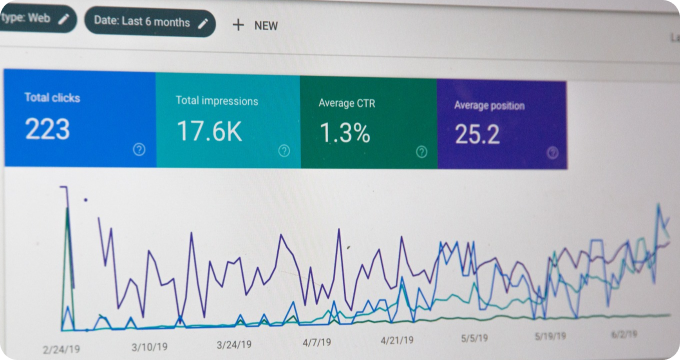Debunking 10 Myths Surrounding Job Costing Software: A Closer Look at the Industry
- November 10, 2023
- 3 minutes
Demystifying the world of job costing software and breaking the chains of misconceptions that surround this industry is a task that requires a surgical analysis. In the labyrinth of myths and misconceptions, the truth often hides behind a veil of misunderstanding, misinformation, or misinterpretation. This post endeavors to debunk ten myths surrounding job costing software and hopes to provide a clearer, all-encompassing picture of this often-misunderstood industry.
The first myth that pervades the discourse around job costing software is that it is inordinately expensive and not cost-effective. This notion stems from the economic theory of cost-benefit analysis, where the perceived benefits do not seem to justify the costs. However, the benefits of job costing software extend beyond simple monetary gain. They bolster efficiency, precision, and productivity, factors that are often intangible and hard to quantify but play a pivotal role in ensuring long-term profitability and sustainability.
Secondly, many believe that job costing software is a luxury, not a necessity. This argument falls under Maslow's hierarchy of needs, where job costing software is considered a 'self-actualization' need, only desirable when all other needs are met. However, this software is essential for project management and accurate cost estimation, serving more as a 'physiological' need, fundamental for survival in the competitive business landscape.
A third myth is that job costing software is only for large enterprises. This misconception probably stems from Dunbar's number, a suggested cognitive limit to the number of people with whom one can maintain stable social relationships. As an enterprise grows, so does the complexity of its projects and the need for efficient cost tracking. However, even smaller organizations can reap immense benefits from using job costing software, enhancing their productivity and competitive edge.
The fourth myth to debunk is that job costing software implementation is a complex, time-consuming process. This myth likely originates from the classic trade-off theory in economics. However, most job costing software today come with user-friendly interfaces and intuitive features that significantly mitigate the time and effort required for successful implementation.
The fifth myth we encounter is that job costing software lacks flexibility. This myth stems from the concept of 'path dependence,' where past decisions or events limit the future options. However, modern job costing software is designed with a high degree of customizability, allowing it to adapt to diverse business needs and environments.
Myth six is that job costing software will replace human jobs. This myth originates from the Luddite fallacy, which predicts that technological advancement will lead to widespread unemployment. However, job costing software is a tool designed to augment human capabilities, not replace them. It eliminates repetitive tasks, freeing up time for more strategic activities.
Another myth, the seventh, is that job costing software cannot handle intricate project details. This myth could be traced back to the concept of 'cognitive load,' where the human brain's capacity to process information is limited. Contrary to this myth, job costing software is equipped with advanced algorithms capable of managing intricate details with ease.
Myth eight is that job costing software cannot integrate with other business systems. This idea may be rooted in the systems theory, which emphasizes the integral function of each component in a system. However, most job costing software in the market today is built on open architecture, allowing for seamless integration with various business systems.
Myth nine is that job costing software lacks security. Given the growing number of data breaches and cyber threats, this fear is not completely unfounded. However, leading job costing software providers invest heavily in advanced security measures, ensuring data integrity and confidentiality.
The final myth, the tenth, is that job costing software is a passing trend. This belief is influenced by the product lifecycle theory, which predicts the rise and fall of products in a market. However, as businesses continue to acknowledge the importance of accurate cost tracking, job costing software is likely to remain a permanent fixture in the business world.
In conclusion, while these myths may seem daunting, they are merely misconceptions that can be debunked through a careful and thorough understanding of the facts. By dispelling these myths, we can appreciate the true value of job costing software – a potent tool designed to streamline operations, foster efficiency, and drive business success.
Learn More
Unleash the full potential of your business by diving deeper into our enlightening blog posts about job costing software. They are encouraged to explore our impartial and comprehensive rankings of the Best Job Costing Software to make an informed decision.
Popular Posts
-
 Job Costing Software Industry Report: Unveiling Key Findings and Insights
Job Costing Software Industry Report: Unveiling Key Findings and Insights
-
 The Future of Job Costing Software: Predictions and Emerging Trends
The Future of Job Costing Software: Predictions and Emerging Trends
-
 6 Things I Wish I'd Known About Job Costing Software Before Implementing One
6 Things I Wish I'd Known About Job Costing Software Before Implementing One
-
 How to Hire the Right Job Costing Software for Your Business
How to Hire the Right Job Costing Software for Your Business
-
 Ask These Questions to a Job Costing Software Provider to Choose the Right One for Your Business
Ask These Questions to a Job Costing Software Provider to Choose the Right One for Your Business






